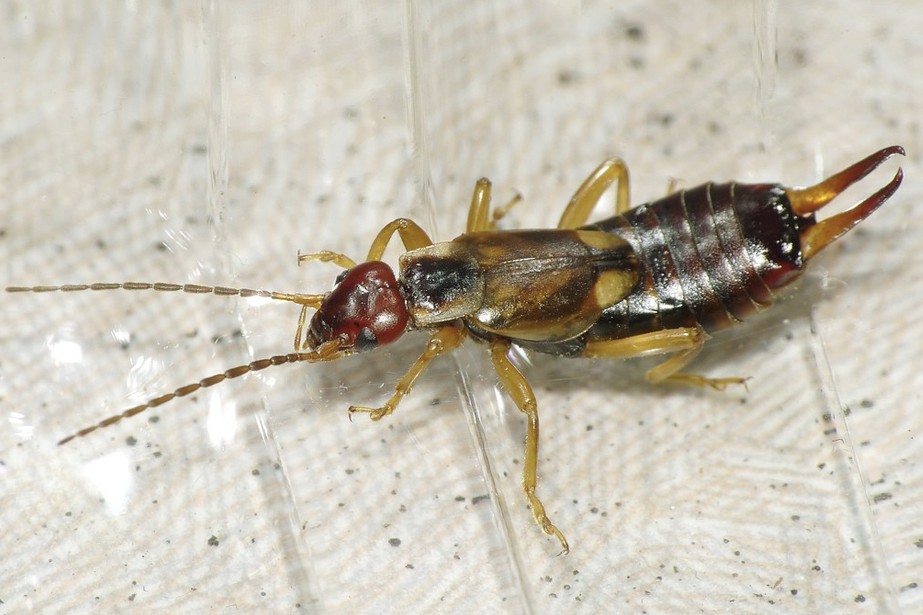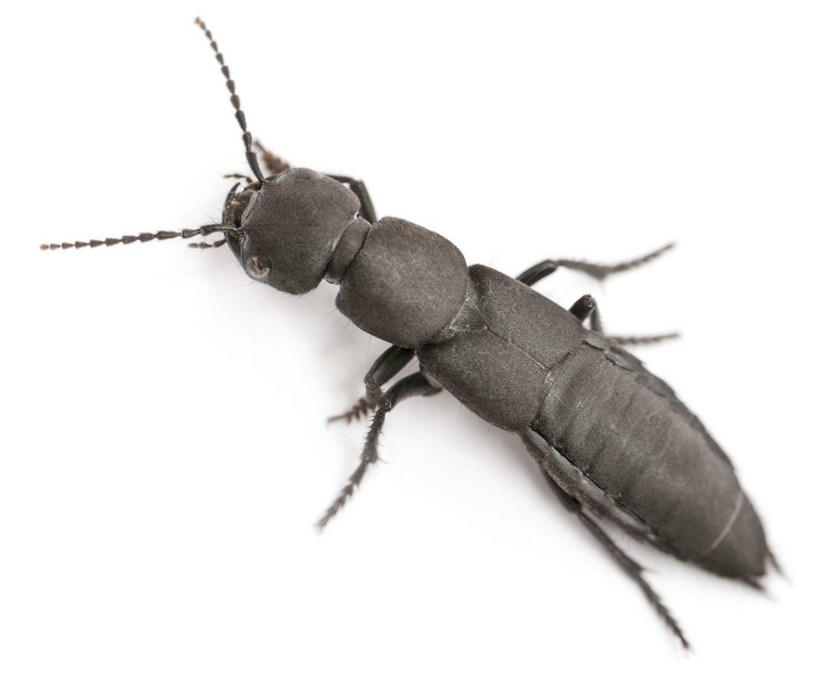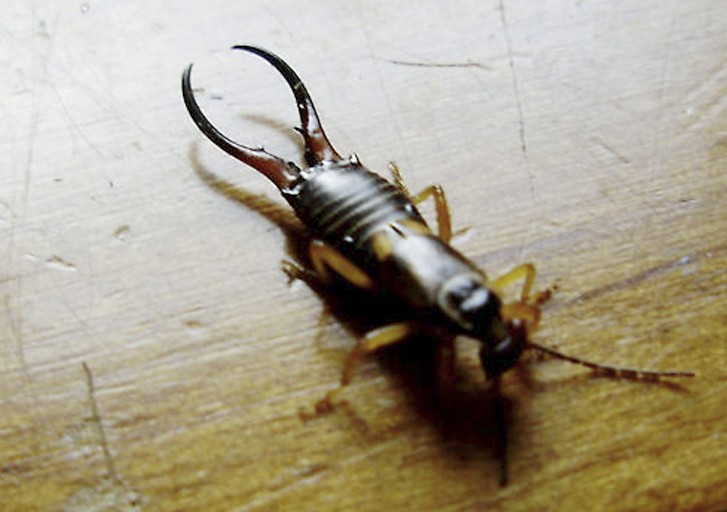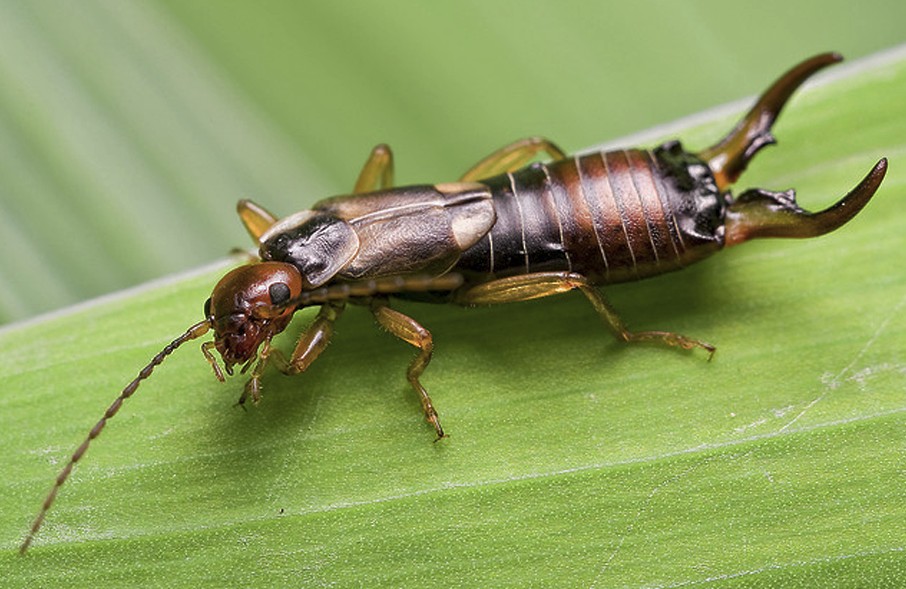Pincher Bug
What are Pincher Bugs?
Pincher bugs, also known as earwigs, are the only members of the insect order Dermaptera – primeval pests that began crawling on the planet’s face around 208 million years ago. In the present day, nearly 2,000 species are sprinkled far and wide, but in the polar regions of the Earth. These bugs were once thought to reside in human ears, and that’s how they got their name “earwig.” In Germany, they are known by the name of “earworms” and called “ear piercers” in France.

Picture of a Pincher bug
Even though these insects can easily be found in just about any developing zone, they are more likely to make their home in warm, damp climates. Being rapid movers, you might have a hard time spotting one. Also, they are more of night creatures, so they will hide out during the day when you are busy nurturing your garden. Pincher bugs have a weakness for plant material and rotting wood, aside from being attached to moist, dark spaces. They can often be found not only in basements but woodpiles as well.
More than 20 species of these bugs called earwigs can be found in the United States. Some species produce a stinking liquid that these creatures use for defending themselves. Also, they create a pheromone (fragrance). According to scientists, this pheromone is the reason why pincher bugs gather in high numbers.
There is a false notion that these critters dig into people’s ears while they are asleep. However, it is a known fact that pincher bugs scare a lot of people because of the pincers located on the back of their abdomen. These pincers are used to protect themselves and for sparing with enemy earwigs.
With the ability to move quickly, these bugs can come together in significant numbers that make them look like more of a severe threat. But you don’t have to fret at all; if you come across pincher bugs rushing around your home, you need not worry because you are in a safe zone, albeit you want to throw these unwelcome critters out.
Usually black or brown in color, these medium-sized pests have flat bodies (like silverfish), while some species have stripes or reddish coloring on heads as well as limbs. The creatures are active at night being nocturnal feeders that feed on other insects.
There are some species of earwigs that are attracted to lights. In the daytime, pincher bugs look for shelter under the organic matter, including leaf litter, pine straw, debris, and mulch. With a preference for dark areas like stones and under sidewalks, these pesky creatures can cause extensive damage to field crops. They can even gain entry to one’s home through doors as well as windows.
Identification: How do Pincher Bugs look like?

Also called as earwigs, pincher bugs are most commonly found in southern climates, although they live throughout the United States. They are small, weird-looking insects that are a ¾ inch in length with a reddish-brown color. Their tail bears a resemblance to forceps, pinchers that expand from the abdomen and they have two pairs of wings that look like leather, with the hind wings that are folded under the ones in the front.
As mentioned above, there are over 20 species of earwigs that are found in the country. While they may seem frightening, they are not venomous, nor do they spread the disease of any kind.
Diet
Pincher bugs or earwigs are omnivores, so it indicates that they can feed on almost everything and anything that’s made available to them. They like to feed on dead or rotting plants in the garden and not to mention, animal matter as well. However, they can also eat insect eggs, grubs, worms, maggots, and aphids. And, when their population increases considerably, they will switch to living plant matter, such as your flowers as well as vegetables.
Due to their forceps size, it might seem that these bugs feed on giant insects like cockroaches. These forceps or pincers are developed properly and appear to be deadly weapons used for hunting. Moreover, they might appear to be lethal when struggling with humans.
Pincher bugs feed on decorative and vegetable plants, including:
- Lettuce
- Hollyhocks
- Dahlias
- Butterfly Bush
- Potatoes
- Strawberries
There are many species of earwigs that are predators. They feast upon smaller insects as well as arthropods. Some species of these bugs do attack plants, especially seedlings. These tender shoots seem appealing to pincher bugs, as they are considered good. These bugs can also be seen feeding on some crop and garden plants as well.
Habitat
Most of the pincher bugs prefer moist or damp areas that are not only cooler, but peaceful too. However, they can be a severe pest in your garden, if conditions are suitable for them. And, if there is enough food, wet soil and ground cover, the pincher bugs will do a lot better.
These bugs prefer living together outdoors and can be found under mulch, debris or in tree holes. In fact, they can easily get inside your home through crevices or cracks in your home exterior.
How Serious Are They?
Pincher bugs might appear to be a dangerous pest, due to their frightening forceps or pincers that protrude from their abdomen. But, this statement does not hold the right thing. A lot of people are under this misconception. If agitated, these bugs can use pincers to grasp onto one’s finger, but they don’t sting at all, nor are they harmful to humans.
Pincher bugs or earwigs can’t sting since they do not have a stinger and venom sac. Well, the physical act of pinching with the help of forceps might cause mild pain or soreness. It might even break one’s skin, but such cases are sporadic. If you have been bitten or stung by these creatures, consider using a lotion or antibiotic cream. This is to ensure that the scratch does not lead to an infection.
The greatest danger from pincher bugs is probably to garden plants, as these bugs are fond of seedlings. And, there have been no reported cases or injuries that required emergency treatment, due to these annoying little critters. Make sure you consult a physician if there are any medical concerns or issues.
Pincher Bugs Pictures
Take a look at some of these pictures of pincher bugs:



Control Tips: How to Get Rid of Pincher Bugs?
Even though pincher bugs are hardly harmful to humans, it does not mean you want them to call your home their ‘home.’ And, if you catch sight of one of these pests in your house occasionally, you can have it swept out of your dwelling followed by proper vacuuming.
Suspecting your house has been invaded by earwigs? Or, looking to keep these insects from gaining entry in your home in the first place? No matter what the reason, you will want to get in touch with a reputable pest control service provider for much-needed relief from these unwelcome guests in your house. A highly trained and skilled technician can assess the problem and will offer you a tailored plan to meet your needs.
How to Trap Pincher Bugs?
Are you looking to lay a trap for pincher bugs? If so, make sure you fill (cat food) cans with a ¼ inch of oil (fish oil, if possible). Now, have them sunk into the ground near plants. Don’t forget to empty them daily.
Also, you can place a cloth (light-colored) under a swamped plant. Once set, shake the branches. Make sure that the pests should fall onto the fabric and then, they can be thrown out.
Facts
Some of the most exciting facts about pincher bugs that you might not be aware of, including:
- Pincher bugs transform into adults in 20 days
- These bugs will sleep through winter in your home
- Pincher bug bites aren’t contagious at all
- Female pincher bugs are strangely maternal
- They are not dangerous to humans
- Pincher bugs avoid using their wings
- They aggressively keep their young ones protected
- Pincher bugs are omnivores
